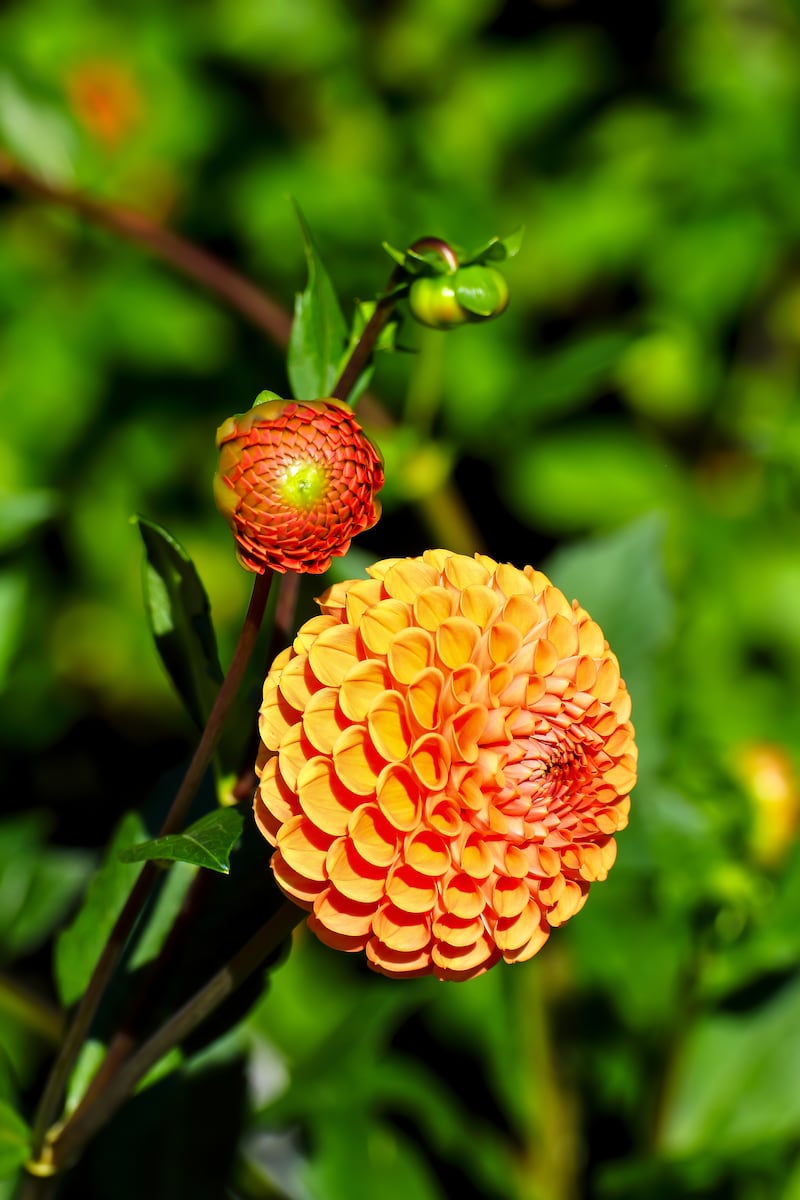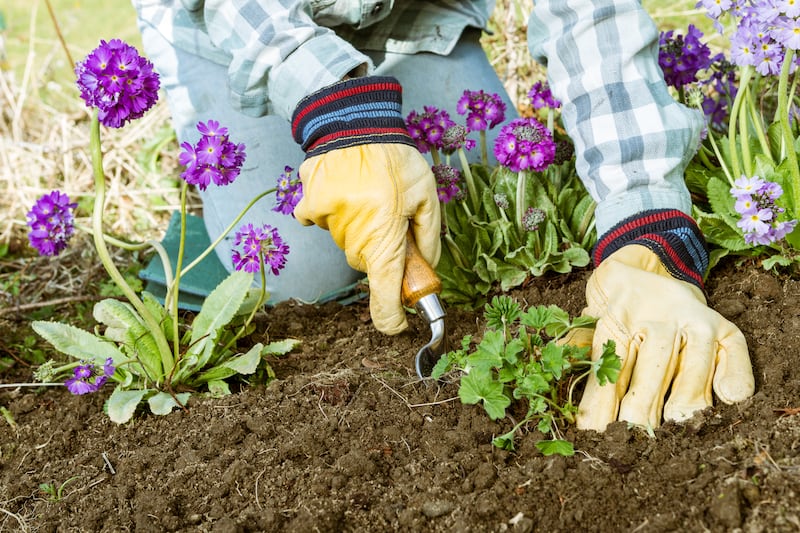In a world where so many of us feel like Lewis Carroll’s Alice as she tumbles down the rabbit-hole – “We’re all mad here” – I’ve been thinking of the life lessons or “life learnings” that our gardens and allotments share with us.
Patience, of course, is one of them. A tree doesn’t grow to maturity in a week, a seed won’t germinate in a second, and winter won’t suddenly give way to summer, no matter how much we would wish it otherwise. There is no fast-forward or “skip” button, no way to accelerate the process, forcing us to “live in the moment” even when we would sometimes really rather not.
Acceptance is another. To garden is to slowly but surely learn that even the most carefully hatched plans can be overturned by any number of weather events, pests and diseases, as well as any of the 1,001 challenges that life throws our way from work deadlines and family obligations to unexpected illness. Life, we discover, sometimes gets in the way. Things aren’t always what they seem or what they were supposed to be, from that perfect variety of faded pink dahlia that turned out to be acid yellow to that treasured batch of seedlings devoured by slugs as a tasty snack or the neatly mown lawn disturbed by hungry badgers in search of food. Such “failures”, part and parcel of being a gardener, putting us on a path to accepting that we’re never entirely masters of our destiny, no matter how much we’d like to think we are.
In much the same way, through our gardens and allotments we see the value of taking a live-and-let-live attitude. That we’re all part of the vast web of life, that every creature matters. This in turn nurtures what the American naturalist Dr Edward Wilson described as “biophilia”, or a love of life in all its forms, an innate inclination hard-wired into all of us to seek out a deep connection with nature.
READ MORE

Which brings us to resilience. To garden for any length of time is to inevitably witness resilience, whether it’s a row of newborn seedlings pushing their way through damp, cold soil or a butterfly taking to the wing after a summer rainshower. When Storm Aisling romped across the country last month, I watched with awe as the garden hunkered down and somehow took it in its stride. The next day the dahlias continued to bloom as if nothing had happened, the birds to sing, the bees to hum. “Life endures” was the message, even despite the obstacles thrown its way.
Resilience goes hand in hand with persistence, another trait that all good gardeners share in common and a quality that yields as much success in the flower border or kitchen garden as it does in life in general. “Try, try and try again” is a motto to live by for good reasons.
Nature often has a quiet but not unkind laugh at our expense
So is the notion of carpe diem, or grab the day, without which our gardens – and our lives – would be so much the poorer. Just think about it. Every tree, every shrub, every hedge planted in the country’s gardens and allotments was put there by someone who decided that they had had enough of procrastination. Each one is a living testimony to grabbing the day. Carpe diem is, of course, also about enjoying the moment, something that naturally happens when you garden. To watch a flower unfurl is to simultaneously be reminded of the fact that life is both beautiful and fleeting.
As anyone who has found themselves knee-deep in mud knows, gardening also teaches us a fine sense of the ridiculous. That nature often has a quiet but not unkind laugh at our expense. This summer, for example, I filled a new flower bed with summer-flowering annuals raised lovingly from seed, anticipating a tasty display of tall, fiery-coloured African marigolds coupled with dusty-pink and blood-red cosmos (the varieties, ‘Antiquity’, ‘Rubenza’ and ‘Apricotta’) and peach dahlias (the variety ‘Preference’). But the marigolds turned out to be a strange pygmy variety utterly unlike what the packet promised, half the dahlias were devoured by slugs, and many of the cosmos mysteriously refused to flower. The result, reminiscent of a cheesy, moth-eaten 1970s bedding display, made us all laugh.
[ How to pack up your plants when moving onOpens in new window ]

Counterbalancing that sense of the ridiculous is a sense of joy and wonder. At the first snowdrop of the year, the first rose in bloom, the first home-grown tomato of summer filched from the glasshouse or polytunnel and eaten in a gluttonous rush of pleasure. I would hate a world without any of them.
Which brings us to the generosity of nature and the opportunities that our gardens and allotments give us to be generous in turn, as well as to appreciate that quality in others. No one, you’ll agree, could ever accuse the plant kingdom of stinginess. Instead, it teaches us the pleasure of abundance. Even if the latter is sometimes just a glut of courgettes.
Finally, as we approach the deep darkness of the winter solstice, our gardens and allotments share important lessons with us about death, hope, restoration and the promise of new life. About the powerful effects that a connection with nature has on our physical, spiritual and mental health.
All of these life learnings have been noted and celebrated by gardeners down through the ages. One of them was the late, great garden writer and landscape architect Russell Page, author of the classic The Education of a Gardener, who once wrote that “a garden really lives only insofar as it is an expression of faith, the embodiment of a hope and a song of praise”. I’d agree with every word and add that perhaps the greatest lesson gardening imparts is to believe in the future, an increasingly precious thing in a world that feels so utterly at odds with itself.
[ What is the best choice of hedging for my garden?Opens in new window ]
This week in the garden
Collect fallen autumn leaves of deciduous species of trees and shrubs and either use them to make leaf mould or add them to the compost heap. For leaf mould, place the leaves in strong bags (old builder’s bags are ideal), lightly water them if they’re very dry, seal the bag, pierce it a few times with a knife or scissors for air and drainage, and then place it in a cool, shady place to rot down over one to two years.
Lift root crops such as beetroot and carrots along with any remaining maincrop potatoes and store them in a cool, dry shed or cellar. In gardens or allotments prone to winter wet, it’s also a good idea to harvest and store parsnips, turnips and celeriac and store these in boxes of sand in a cool dark shed or cellar. Newly emptied beds should then be covered with a generous organic mulch to protect soil health and fertility over winter.
Dates for your diary
Throughout November: a series of hands-on workshops on hazel coppicing and hedge laying by Hedgerows Ireland. hedgerows.ie
Thursday, November 28th (8pm): Scoil Mhuire Naofa, Station Road, Carrigtwohill, Co Cork, T45PF80, Summer Flowers from Seed, a talk by Derry Watkins of Special Plants Nursery
Saturday & Sunday, December 7th & 8th, and Saturday, December 14th (10am-1pm): The Grinding House, June Blake’s Garden, Tinode, Blessington, Co Wicklow, seasonal Christmas wreath-making workshops with garden writer and flower-farmer-florist Fionnuala Fallon, see eventbrite or @theirishflowerfarmer for details/to book tickets.

















